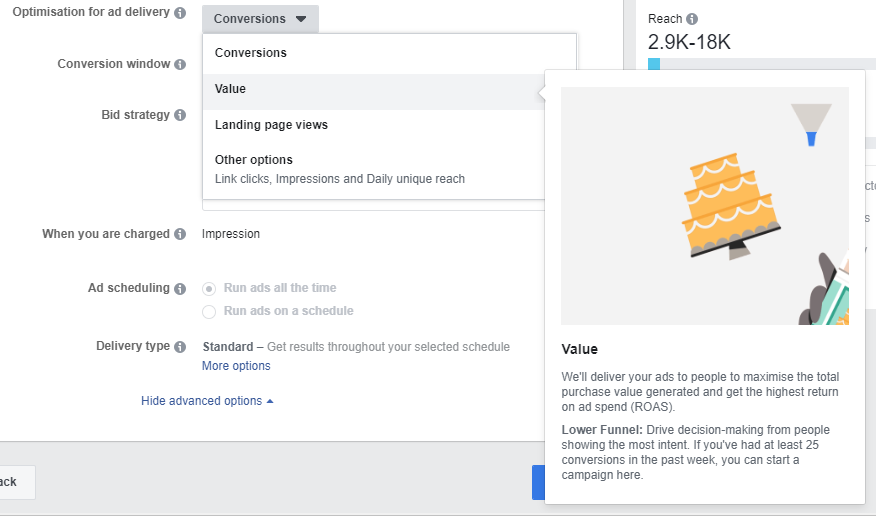Have you used value optimization on Facebook yet to find customers who are going to spend the most at your business?
In this article I am going to explain how it works and how you can use it.
What is value optimization on Facebook?
Value optimization on Facebook aims to find you customers who will get you the highest purchase value.
Each time you make a sale on Facebook you can see how much each sale generated in revenue, if you’ve set up your pixel correctly.
Value optimization on Facebook aims to find you customers who are the most likely to make higher value purchases.
For example, if Facebook can find a conversion at $10 with the revenue of that sale valued at $50, or a conversion at $20 with the value of that conversion at $120, the latter will be chosen because it will have a higher return on ad spend (ROAS).
While you paid more than double for the conversion, the ROAS will be higher and give you more profit on the sale.
This differs from the standard conversions bidding type, which aims to find you users who are most likely to place an order at your store regardless of how much they are going to spend.
To use value optimization, within the ad-set you would select ‘Value’ for the optimization for ad delivery:

You’ll need 25 conversions or more in the past seven days to make full use of this feature. Value optimization takes the purchase values that your customers made within the last seven days and automatically changes your ad’s bid to find users who are most likely to spend more at your business.
When to use value optimization
Value optimization is going to be of great use for e-commerce stores that are driving lots of weekly sales and have large audiences.
Value optimization aims to find customers who are going to spend the most. This also means that it may overlook potential customers who would have placed an order at your store for a lower value.
This is great when you have a large audience because scaling won’t be difficult, but for local businesses that have much smaller audiences (I’m talking an audience of one million or less), I don’t think it will be as useful.
If you’re looking to acquire more customers regardless of how much they spend, the standard conversion optimization is best suited for that.
If you’re looking to maximize revenue and care more about this than how many new customers you acquire each month, then value optimization is going to be better suited for that.
Test both features against each other to see how they compare and whether value optimization can bring in the same amount of customers and conversion optimization but with a much higher revenue spend.
Your turn
Facebook allows you to use its own internal A/B testing feature to test both conversion optimization types.
You may find that value optimization brings you a different type of customer who spends more and orders more frequently, which of course is great for business. If your main focus is to grow your business and CPA, then it’s still worth testing as value optimization gives the algorithm more wiggle room to bid higher and find new opportunities.